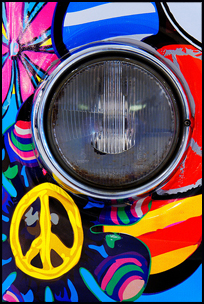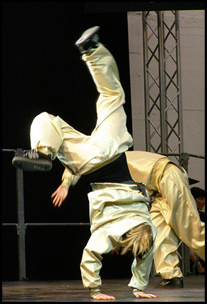 By PAT HARTMAN
By PAT HARTMAN
News Editor
What does a scaler of Everest have in common with a guy sitting on a piece of driftwood on the Oregon shore who hasn’t climbed ten feet above sea level for years? They’re both extreme travelers.
For a lot of people, “extreme” doesn’t necessarily mean going to a remote place, or performing impressive physical deeds, or even seeking a particular kind of thrill. For some, travel is not an occasional luxury, or even a periodic obligation, but a way of life. The “extreme” part is the unending duration of it, and the danger that isn’t sought but that comes anyway.
America has its share of eternally restless wanderers who make their homes in old buses, vans, and even cars. Sooner or later, most of them pass through Venice, California. This piece looks at a few of them, who were featured in Rubber Tramps, a documentary directed by Max Koetter and produced by Kenny Rosen. The film crew started in Venice and worked its way up the California coastline to Oregon, interviewing and immortalizing a fascinating array of road folks such as these:
Ceramic artist Patty has run afoul of the rules governing sales on the boardwalk…During the filming of Rubber Tramps, Patty’s home on wheels was destroyed by fire, and the filmmakers gave her one of their buses. RomTom has spent plenty of time in Venice during his travels, and wrote a good portion of his book Comporting Roadwise in a local cafe.
For a fuller look at the “cast,” the film’s MySpace page shows the whole spectrum: the Vietnam veteran and his son; the Deadhead; the schizophrenic; the Greyhound employee; the aging black bluesman; the various troubadours and philosophers whose words and lives make this such an inspiring chronicle of alternative lifestyles. The film is stitched together with segments of a Ken Kesey interview, as the grand old man tromps around his Oregon farm. It was the last major film project of Kesey’s life. There’s even some antique footage of beat icon Neal Cassady driving the Merry Pranksters’ bus, Furthur.
The ability to be at home anywhere is, nowadays, an extreme life skill. But it used to be the only game in town, back when there was no town. Our roaming hunter-gatherer ancestors knew how to make the whole world their comfort zone. It’s genetic, mostly dormant, but still active in the true Gypsies. The Romany people have been persecuted for centuries, forced into urban ghettos to put an end to their roving, and then persecuted some more. In Europe and the United Kingdom they’re marginalized, and even tolerant Canada is undergoing a wave of Romophobia. In the Czech Republic alone, there have been at least 35 racially motivated murders of Gypsies in the past 20 years. In The Star, Rosie Dimanno, who writes prolifically about the world political scene, provides a summary of the current situation.
At the end of July, 150 Romanian gypsies showed up in Prague because a 17-year-old said to be the “prince” was in the hospital and not expected to live. (It should be noted that one of the gypsy secrets, revealed by a trustworthy source, is that there’s no such thing as Gypsy royalty, it’s just public relations BS to fool the gajos.) They camped someplace, and there were no problems. Then, the public health officials got involved, because to cook out in the open is unsanitary. The Gypsies camped someplace else, but got kicked out of there because it’s a natural heritage site. Then they camped somewhere else…
Well, the young man died. The Gypsies didn’t have enough money to transport the body back to Romania. Not even a third of it. So they hit up the Prague city fathers and the Romanian embassy, which said it would let them know in a couple of weeks. At another campground, the city declined to provide the Gypsies with portable toilets or tanks of drinking water. They might like it too much and decide to stay. They are the archetypal NIMBY triggers. (Somewhat like halfway houses, recycling plants, and various other things that are recognized as good, but to which the average urban dweller is likely to object, saying “not in my back yard.”) Civilized people think the Rom should just get over themselves and settle down. But in some other back yard.
photo courtesy of Dennis Wong , used under this Creative Commons license

 By PAT HARTMAN
By PAT HARTMAN The picture here is of a couple of the figures, and part of the dials.
The picture here is of a couple of the figures, and part of the dials.
